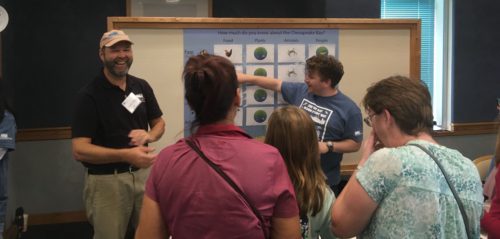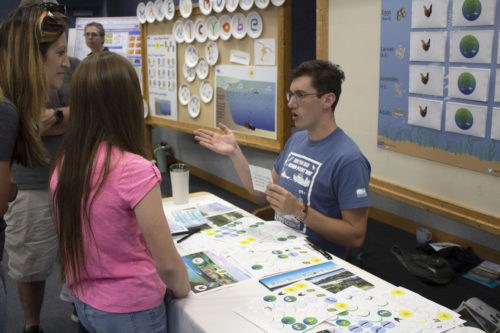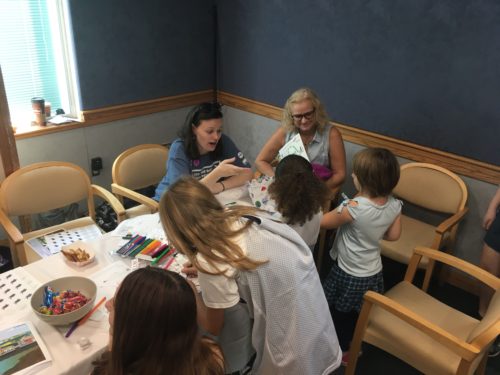IAN Tests Visitors’ Knowledge of The Chesapeake Bay at the 2019 Horn Point Campus Open House
Nathan Miller ·
Do you know how many chickens are produced in Maryland and Delaware each year?
Better yet, do you know how much each one of those chickens poops each year?
These were just some of the trivia items among a slew of others that the IAN team quizzed visitors on during this year’s open house at the Horn Point Campus (for those inquisitive minds reading this piece who don’t know the answers to the above, they are a.) five million chickens, and b.) 130 pound of poop per chicken per year. In total, Delaware and Maryland’s chicken population produce up to 650 million pounds of chicken poop each year).
The theme of this year’s open house was, “See the Bay the Horn Point way!” Given this wholly innocuous direction for all UMCES participants of the open house, why would we, IAN, plop such an odd question on innocent folks just simply waiting for their turn to ride the Rachel Carson research vessel? Well, each year, a significant chunk of that 650 million pound reservoir of chicken poop gets inadvertently dumped (pun definitely intended) into the Chesapeake Bay watershed via poor sewage treatment and annual flooding, polluting the Chesapeake Bay and impacting important ecosystem services, fishery habitat, and recreational services.

IAN’s booth, headlined, Test Your Knowledge of the Chesapeake, wasn’t designed to gross visitors out, nor was it meant to provide simple one-word answers to any of the questions we threw out to visitors. By asking engaging questions, the IAN team used the visitor’s guessed answer – regardless of its accuracy – to discuss important aspects of Chesapeake conservation and management in a manner that strived to be as fascinating and relevant to the general public as possible. Listening to visitors’ comments and reactions to the Chesapeake fact we provided was just as critical. Integrating your audience’s interests and perspective into how we discuss resource management is foundational to informal environmental education scenarios. By making our quiz booth thematic, organized, enjoyable, and relevant, we hope that visitors left the IAN station with a little more knowledge about the Chesapeake – as well as a better idea of how to care for the bay in the years to come.

Of course, with IAN having a team of graphic design pros in the office, we couldn’t pass on the chance to show kids how to draw their own symbols on stickers that they could take home. Thank you so much to the IAN team who participated in this year’s open house. Until next year!
About the author
Nathan Miller

Nathan Miller received his BFA in film and television from New York University and his Masters at Duke University, where he studied coastal environmental management as well as environmental education. For his master's project at Duke, he developed an environmental interpretation manual for seal naturalists in New England. Since coming to the Integration and Application Network (IAN), Nathan has developed environmental health report cards and led or co-facilitated multiple courses on data interpretation and science communication. Scientists, managers, and students of all experiences enroll in these courses in order to gain a foundation in multimedia and storytelling strategies, which in turn helps make complex data more accessible to the general public. Nathan has also co-developed courses in collaboration with the Arnold School of Public Health at the University of South Carolina that teach graduate students how to develop stakeholder driven research projects.

